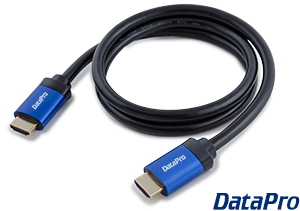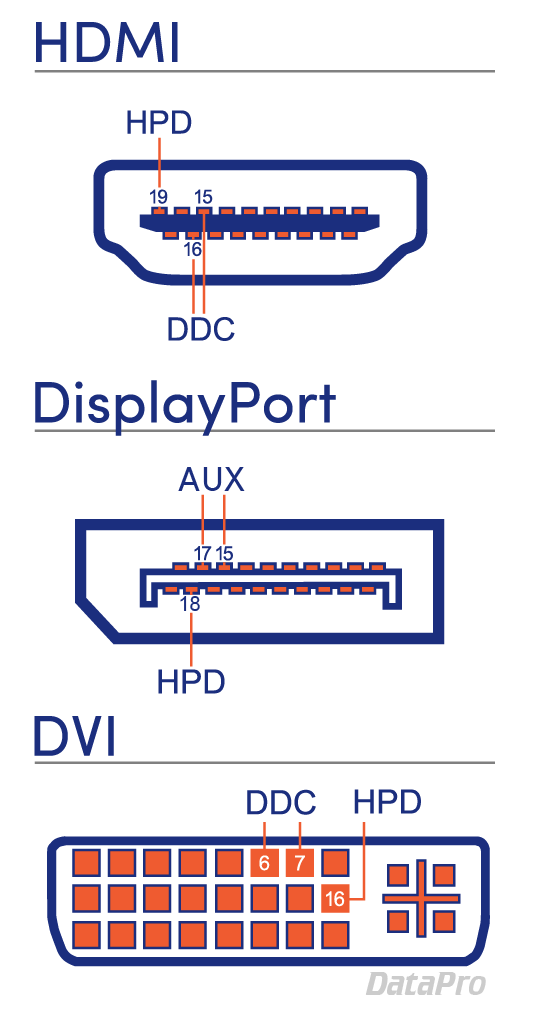Hot Plug Detection, DDC, and EDID
Posted cute
tags:
篇首语:本文由小常识网(cha138.com)小编为大家整理,主要介绍了Hot Plug Detection, DDC, and EDID相关的知识,希望对你有一定的参考价值。
Hot Plug Detection, DDC, and EDID
DataPro Tech Info > Hot Plug Detection, DDC, and EDID

Hot Plugging
A convenient feature of most modern displays is that they can be "hot plugged" into a source device while both are powered on, and will immediately become active with the correct display settings.This behavior is made possible by three features: Hot Plug Detection, the Display Data Channel, and Extended Display Identification Data.
Index
What is Hot Plug Detection?
"Hot Plugging" a display into a source means the devices are connected while both are powered on. This differs from older technology which often needed to be "cold-plugged" with one or both devices powered off. Hot Plug Detect or "HPD" is a feature of the HDMI, DisplayPort, and DVI specifications. Typically it relies on a single pin in the connector making contact, which initiates the process.What is DDC?
The DDC, or Display Data Channel, describes both the protocol and physical path used by the source and display to communicate. It is typically assigned to a pin or pins on the interface, and carries the EDID.Instead of a dedicated DDC, DisplayPort uses a multifunction "AUX Channel" that serves as both a medium for user data (typically USB), and a means to transmit EDID and other topology information.
What is EDID?
EDID (Extended Display Identification Data) is information provided by the display to describe its capabilities and requirements to the source device. It contains information such as the manufacturer, serial number, maximum resolution, refresh rate, and color spaces.以上是关于Hot Plug Detection, DDC, and EDID的主要内容,如果未能解决你的问题,请参考以下文章
